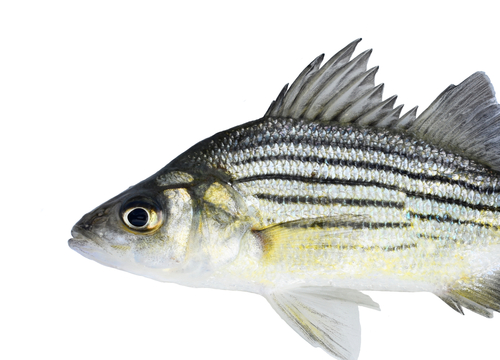
Yellow Bass
The Atlantic bluefin tuna (Thunnus thynnus) is a highly migratory species of tuna. It is one of the largest bony fishes, known for its incredible speed and endurance, making it a top predator in the marine ecosystem.
5 7 years
Lifespan
20 - 30 cm
Length
Least Concern
Conservation Status
15 km/h
Swimming speed
Carnivorous, Insectivorous
Diet
Local Migration
Migration
Appearance Overview
The Atlantic bluefin tuna is renowned for its large, streamlined body, built for speed and endurance in the ocean.
Color
Dark metallic blue on top with a silvery underside
Body Shape
Torpedo-shaped body
Fins
Two dorsal fins, the second taller than the first; short pectoral fins
Length
up to 10 feet (3 meters)
Weight
up to 1,500 lbs (680 kg)
Diet
Carnivorous, feeding on fish, squid, and crustaceans
Feeding Behavior
Uses speed to chase down prey, sometimes in coordinated schools
Social Behavior
Solitary, migratory
Commercial Relevance
High value in sushi markets
Conservation measures
Fishing quotas, marine protected areas
Status
Endangered
Threats
Overfishing, climate change, habitat loss
Habitat Distribution
Depth Range
0-900 meters
Geographic Range
Atlantic Ocean, Mediterranean Sea
Preferred Environment
temperate waters, open ocean
Reproduction and Life Cycle
Breeding Habits
Spawns in warm waters, often near the Gulf of Mexico
Development Stages
Larvae hatch in plankton-rich waters and grow rapidly
Fecundity
Females can produce millions of eggs per season
Maturity Age
Matures at 4-8 years
Faqs about Yellow Bass
How long do Atlantic bluefin tuna live?
Atlantic bluefin tuna can live up to 40 years.
Are Atlantic bluefin tuna warm-blooded?
Yes, they are warm-blooded, capable of maintaining a body temperature higher than the surrounding water.
How fast can Atlantic bluefin tuna swim?
They can swim at speeds up to 43 miles per hour (70 kilometers per hour).
Where are Atlantic bluefin tuna found?
Atlantic bluefin tuna are found in the western Atlantic Ocean and the Mediterranean Sea.
What are the main threats to Atlantic bluefin tuna?
Atlantic bluefin tuna are primarily threatened by overfishing due to their value in sushi markets. Climate change and habitat degradation are other threats.
What do Atlantic bluefin tuna eat?
Atlantic bluefin tuna are carnivores, feeding on fish, squid, crustaceans, and other marine organisms.
How large can Atlantic bluefin tuna grow?
The largest recorded Atlantic bluefin tuna weighed around 1,500 lbs (680 kg).
What is the conservation status of Atlantic bluefin tuna?
Atlantic bluefin tuna are listed as Endangered, meaning they are at high risk of extinction in the wild.
Copyright @ Nature Style Limited. All Rights Reserved.
 English
English